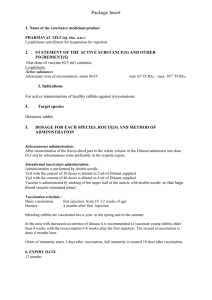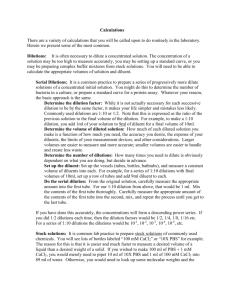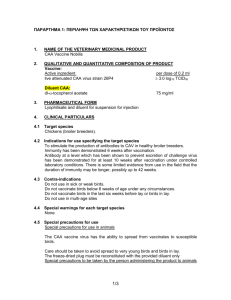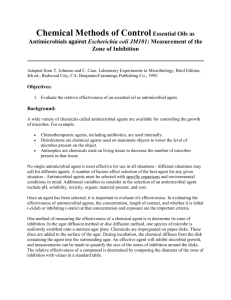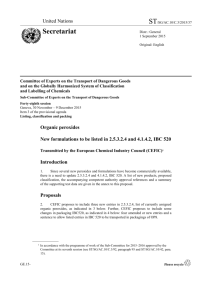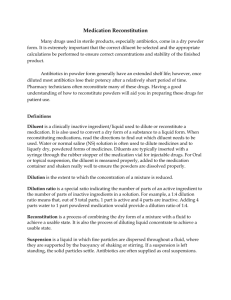Moxi Z Cell Counter – Cell Sample Preparation Overview Media
advertisement
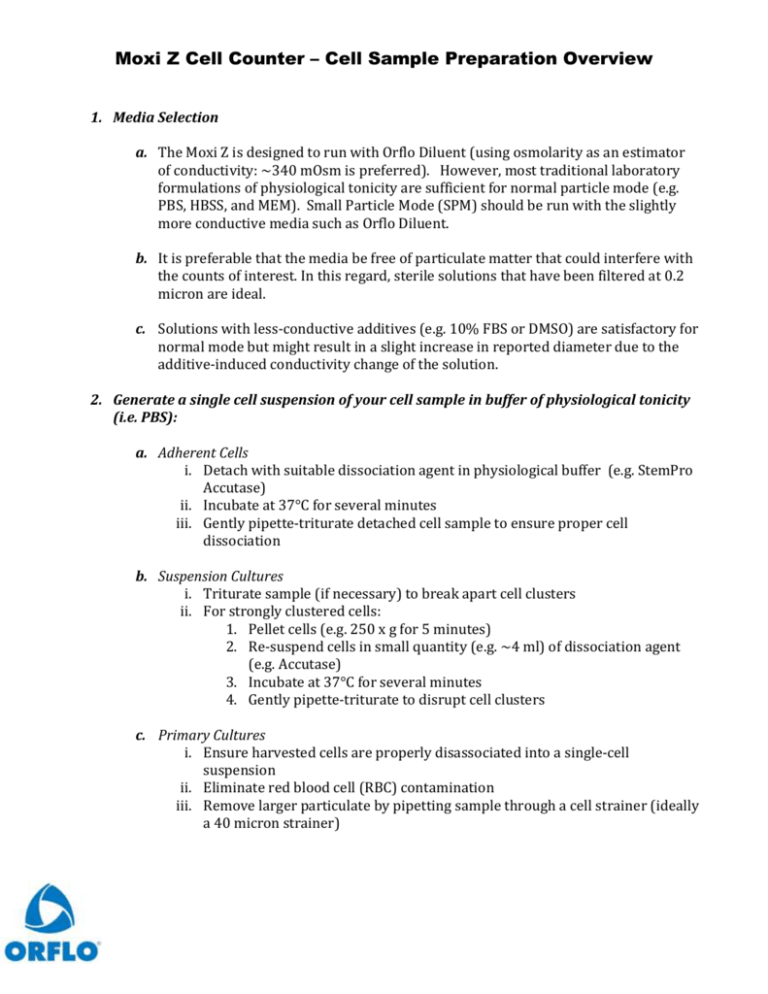
Moxi Z Cell Counter – Cell Sample Preparation Overview 1. Media Selection a. The Moxi Z is designed to run with Orflo Diluent (using osmolarity as an estimator of conductivity: ~340 mOsm is preferred). However, most traditional laboratory formulations of physiological tonicity are sufficient for normal particle mode (e.g. PBS, HBSS, and MEM). Small Particle Mode (SPM) should be run with the slightly more conductive media such as Orflo Diluent. b. It is preferable that the media be free of particulate matter that could interfere with the counts of interest. In this regard, sterile solutions that have been filtered at 0.2 micron are ideal. c. Solutions with less-conductive additives (e.g. 10% FBS or DMSO) are satisfactory for normal mode but might result in a slight increase in reported diameter due to the additive-induced conductivity change of the solution. 2. Generate a single cell suspension of your cell sample in buffer of physiological tonicity (i.e. PBS): a. Adherent Cells i. Detach with suitable dissociation agent in physiological buffer (e.g. StemPro Accutase) ii. Incubate at 37°C for several minutes iii. Gently pipette-triturate detached cell sample to ensure proper cell dissociation b. Suspension Cultures i. Triturate sample (if necessary) to break apart cell clusters ii. For strongly clustered cells: 1. Pellet cells (e.g. 250 x g for 5 minutes) 2. Re-suspend cells in small quantity (e.g. ~4 ml) of dissociation agent (e.g. Accutase) 3. Incubate at 37°C for several minutes 4. Gently pipette-triturate to disrupt cell clusters c. Primary Cultures i. Ensure harvested cells are properly disassociated into a single-cell suspension ii. Eliminate red blood cell (RBC) contamination iii. Remove larger particulate by pipetting sample through a cell strainer (ideally a 40 micron strainer) Moxi Z Cell Counter – Cell Sample Preparation Overview d. Whole Blood Sample i. WBC nuclei Remove RBC interference with RBC lytic reagent (ZAP-oglobin II) 1. Add 45ul of blood to 15ml of ORFLO Diluent 2. Add 4 drops of ZAP-oglobin II 3. Mix well by inverting 5X and wait 2 minutes 4. Count in Small Particle Mode using Type S Cassettes ii. PBMC Isolate PBMCs using gradient centrifugation (e.g. Ficoll-Paque) iii. RBC Dilute whole blood 1:2500 when using the Type S Cassettes Dilute whole blood 1:10,000 when using the Type M Cassettes 3. Dilute the single cell suspension as appropriate based on the concentration range of the cassette type (Type M or Type S) being used: Type M cassette: 3,000 – 500,000 cells/ml (If you don’t have a ballpark starting cell density, we suggest a first run with a 1:9 dilution using Orflo Diluent or PBS). Type S cassette: 3,000 – 2,500,000 cells/ml (If you don’t have a ballpark starting cell density, we suggest a first run with a 1:1 dilution using Orflo Diluent or PBS). 4. Mix Sample – invert tube a few times before pipetting sample to ensure cell homogeneity. Note: Vortexing and shaking are not efficient approaches for dispersing cells.
